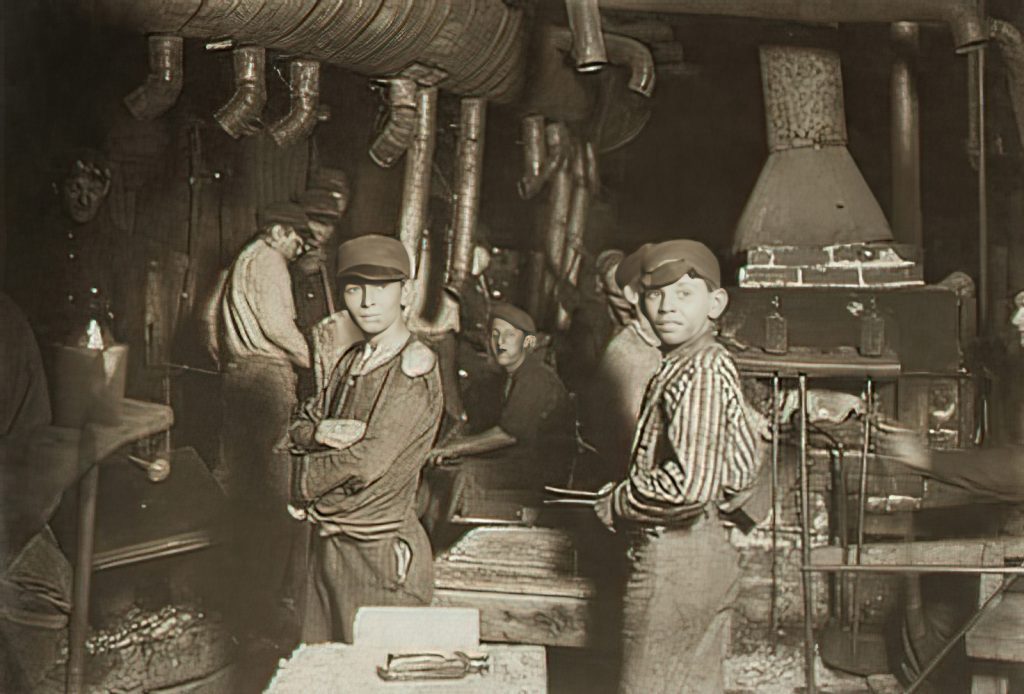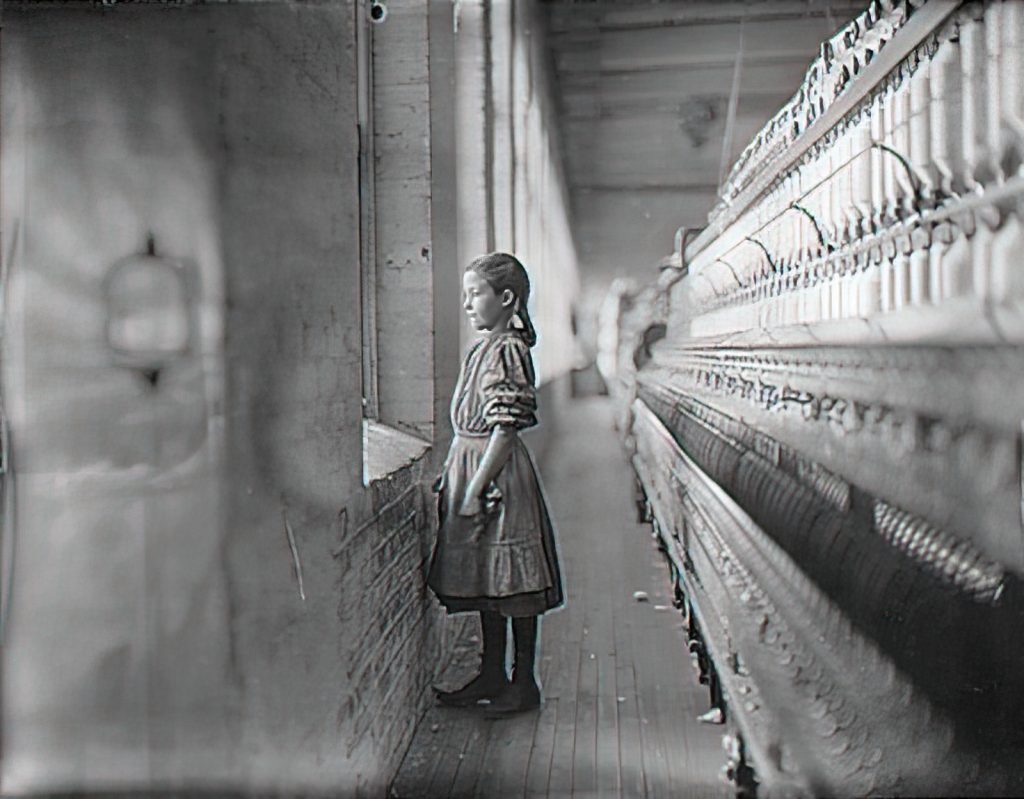Addie Card, 12 years. Spinner in North Pormal [i.e., Pownal] Cotton Mill. Vt.
If I could tell the story in words, I wouldn’t need to lug around a camera.
– Lewis Wickes Hine
Lewis Hine is a photographer I have studied and admired, and I think of him when I struggle to find something to photograph. Like Hine, I started my studies in the social sciences. Then, I studied social work and quickly realized my calling was to be a photojournalist.
Lewis Hine studied sociology at the University of Chicago, Columbia University, and New York University. He became a teacher in New York City at the Ethical Culture School, where he encouraged his students to use photography as an educational medium. The classes traveled to Ellis Island in New York Harbor, photographing the thousands of immigrants who arrived each day. Between 1904 and 1909, Hine took over 200 photographs and eventually realized that his vocation was photojournalism.
Hine went on to work for the Russell Sage Foundation, which improved social and living conditions in the United States. After just a couple of years with the foundation, he went to work for the National Child Labor Committee. He did this for ten years, and his work helped to change the labor laws for children.
During WWII, he worked for the American Red Cross, covering the work in Europe. In 1930, he photographed the workers building the Empire State Building. To get the photos of workers through the years, he would take similar risks to those the workers were taking. While working on the Empire State Building project, he was in a unique basket 1,000 feet out over 5th Avenue to get that unique angle.

Lewis Hine’s work is so powerful because he knew what he was photographing and why he was doing it. He was doing something useful with his photography. Hine said, “If I could tell the story in words, I wouldn’t need to lug around a camera.”
The fun in photography is taking on a challenge and bringing all your creativity to it to help communicate an idea or concept to your audience. Unfortunately, using a lot of typical clichés quickly becomes tiresome.
Not knowing what to photograph is an excellent time to ask yourself what you stand for. First, you must understand your relationship to the things around you and their meaning. Observation is how you form thoughts and convictions about the world. It is not from formal education—it is from a sense of caring about people and the world in which you live.

When you have this gut check, it will inspire you to take on a subject and communicate how you feel about it, not just documenting its existence but its significance to you. You want people to respond, and this is what motivates you.
I am struggling to find subjects that often lack personal convictions.
The secret is to think about the audience. Knowing the audience gives me a goal in mind. I must love or hate the subject to get my emotions going and create a mood and feeling that I want to communicate beyond the obvious.

When you find yourself in a mental block, you tend to scapegoat your responsibilities. This is where you often look for a formula or copy someone else’s concept. I see this most often in sports photography. You see the photographers all standing together. One of my friends, Scott Cunningham, who photographs the NBA for Getty Images, is rarely sitting next to other photographers. He is in the stands and always looking for something different.
Another scapegoat photographers use is that they don’t have a piece of equipment, or their equipment limits them. Remember, we still haven’t exhausted all that is possible with the simple point-and-shoot. Be careful not to buy new equipment as a way to inspire you. Instead, take the time to think and feel about your world.
“What shall I photograph?” will not be an issue. Instead, the problem becomes, “How can I say it clearly and with enough emotion that my audience is moved to action because of my photos?”
